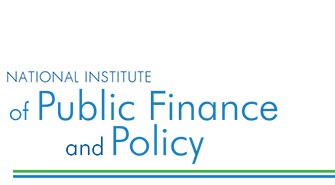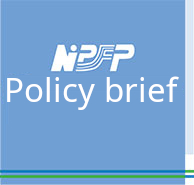|
In India, the interest in business cycle research is relatively new, though industrialised economies and some emerging economies have a fairly long history of business cycle measurement. Two distinct periods emerge in the analysis of business cycles in India: the pre 1991 period and the post 1991 period. Pandey et al. (2018) on which this one pager is based present an overview of the methods used for arriving at the business cycle chronology in the two periods and the macroeconomic conditions that shaped the cyclical fluctuations in the two periods.
In the India of old, business cycle downturns in the pre-liberalisation period were associated with drought or oil price hike and saw sharp declines in GDP. There were no investment-inventory cycles or periods of expansion followed by periods of contraction that are typically seen in industrialised countries.
The literature identified some common periods of contraction and deceleration for the period 1950-1991.
1. 1957-58 is identified as an year of contraction by Patnaik and Sharma (2002) and as a period of deceleration by Mall (1999) and Chitre (2004).
2. 1965-66 is identified as an year of contraction by Patnaik and Sharma (2002) and as a period of deceleration by Mall (1999) and Chitre (2004).
3. 1972-73 is identified as a period of contraction by Dua and Banerji (2012) and as a period of deceleration by Mohanty et al. (2003).
4. 1979-80 is identified as an year of contraction by Patnaik and Sharma (2002) and as a period of deceleration by Mall (1999), Mohanty et al. (2003) and Chitre (2004).
1991-92 is identified as a period of contraction by Patnaik and Sharma (2002) and Dua and Banerji (2012).
India faced a severe Balance of Payments crisis in the early nineties. While the crisis hit India in 1990-91, it had been building for half a decade prior to the crisis year. The fiscal deficit was rising and exchange rate rigidity led to a rise in current account deficit. The restrictive framework governing foreign investments resulted in current account deficit translating into rising levels of external debt. To address the crisis like situation, a series of reforms towards a market oriented economy were introduced. Devaluation and transition to a market determined exchange rate, phased reduction of import duties, encouragement to foreign direct and portfolio investment and abolition of industrial licensing with greater role for private sector investment were some of the key reforms introduced in the nineties.
Since 1991, while India has seen a sharp increase in private corporate sector investment as a share of GDP, this share has shown sharp upswings and downswings. Investment-inventory fluctuations are today central to understanding the emergence of business cycles in India.
Dua and Banerji (2012) present monthly classical and growth rate cycle chronology for India. As far as the classical approach is concerned, we see an expansion in the first half of the nineties. A brief episode of contraction is seen from June 1996 to November 1996. The growth rate cycle approach identifies the periods of deceleration: May 1992 to April 1993, May 1995 to November 1996, and October 1997 to October 1998, April 2000 to July 2001, May 2004 to October 2004, November 2005 to March 2006 and February 2007 to January 2009. Mohanty et al. (2003) present a growth cycle chronology using the monthly index of industrial production (IIP) series. In these studies either a coincident index of monthly series or the monthly Index of Industrial Production (IIP) is used to arrive at the chronology of dates. In the paper we use the quarterly GDP series (Base year 2004-05) to identify the chronology of turning points in the post liberalisation period. (Pandey et al., 2017). We believe that the quarterly real GDP series is a better measure of the business cycle conditions since it is an aggregate of agriculture, industry and services. We use the Christiano-Fitzgerald filter (CF) to isolate the trend and cyclical component. The cyclical component is standardised before the application of the dating algorithm.
|
Table 1: Dates of turning points in GDP and their summary statistics
Here Q1 refers to January-March, Q2 refers to April-June, Q3 refers to July-September and Q4 refers to October-December.
The table shows three periods of deceleration in the economy.
The first episode of deceleration was in the period: 1999-Q4 to 2003-Q1, the second deceleration was in the period 2007-Q2 to 2009-Q3, and the third deceleration in the period 2011-Q2 to 2012-Q4. Table also shows the average amplitude and duration of phases of acceleration and deceleration extracted from these dates. The average duration of acceleration is 12 quarters and the average duration of deceleration is 9 quarters. The average amplitude of acceleration is seen to be 2.5% while the average amplitude of deceleration is 2.2%.
The Indian Statistical Office revised the GDP series in January 2015. The old GDP series used as the reference series for this analysis got discontinued since 2014 Q3. Has the deceleration identified till 2012 Q4 ended? The paper finds that the deceleration identified till 2012 Q4 is still visible in a number of key indicators such as investment, credit growth, exports and firm performance indicators.
References: Bry G, Boschan, C. 1971. Cyclical Analysis of Time Series: Selected Procedures and Computer Programs. National Bureau of Economic Research. URL: http://www.nber.org/chapters/c2145.
Chitre, V.S. 2004. Indicators of business recessions and revivals in India 1951 - 82.
Dua P, Banerji A. 2012. Business and Growth Rate Cycles In India. Working papers 210, Centre for Development Economics, Delhi School of Economics. URL https://ideas.repec.org/p/cde/cdewps/210.html.
Mall, O. 1999. Composite Index of Leading Indicators for Business Cycles in India. RBI Occasional Papers, 20(3): 373– 414.
Mohanty J, Singh B, Jain R. 2003. Business cycles and leading indicators of industrial activity in India. MPRA Paper, University Library of Munich, Germany. URL https://econpapers.repec.org/paper/pramprapa/12149.htm.
Pandey R, Patnaik I, Shah A. 2017. Dating business cycles in India. Indian Growth and Development Review, 10(1): 32–61. URL https://ideas.repec. org/a/eme/igdrpp/igdr-02-2017-0013.html.
Pandey R, Patnaik I, Shah A. 2018. Business Cycle Measurement in India. Working Papers 18/221, National Institute of Public Finance and Policy. URL https://ideas.repec.org/p/npf/wpaper/18-221.html.
Patnaik I, Sharma R. 2002. Business cycles in the Indian economy. MARGIN- NEW DELHI-, 35, 71–80. ISSN 0025-2921. |
- Home page.
- About us
- Our Work
- Projects
- People
- Activities
- 5th Biennial High-level Meeting of the Development Cooperation Forum (DCF), July 21, 2016
- Conference on Economics and Politics of Local Governments: The Indian Experience
- 11th Annual Conference on Economic Growth and Development
- NCAER Seminar: The World Bank’s India Development Update 2015: Fiscal Policy for Equitable Growth, November 2015
- IGEG Conference, October 2015
- Present State of Goods and Services Tax (GST) Reform in India, Canberra, August 2015
- New Rules for New Horizons: Reshaping Finance for Stability, Paris, July 2015
- The New Development Bank: Identifying Strategic and Operational Priorities, New Delhi, June 2015
- Publications
- Blog
- Training
- Events
- Library
- News
- Contact us




